Low Level Radiation Campaign;
8th Sept 2021 1000GMT PRESS RELEASE IMMEDIATE
British Scientist discovers the cause of cancer in the Hiroshima Black Rain survivors
Massive errors in the basis of legal controls on radiation exposures
In a peer-reviewed paper published by the respectable journal Cancer Investigations ,British Scientist Dr Christopher Busby reveales the results of his investigative research into the Hiroshima A-Bomb Black Rain, torrential rain that fell on Hiroshima after the detonation of the US atomic bomb. The issue of cancer risks in people who lived in the area of the back rain was headlined recently when the Japanese government lost a court case taken by hibakusha groups who believed that their cancers were a result of the A-Bomb, but who lived in the black rain areas too far from the detonation to have received any external radiation dose. One problem for these people is that there has been no scientific explanation. The black rain was believed to be insufficiently radioactive to cause cancer. The report: “The Hiroshima A-Bomb black rain—a resolution of the enigma” provides evidence from an obscure US restricted report from 1976, declassified in 2014, that the 55kg of unfissioned material of the bomb, Enriched Uranium, contained vary large amounts of the Uranium isotope U234 which formed the condensation nuclei for the black rain and contaminated Hiroshima’s water and air for many years. The calculated exposures from the long-lived Uranium particles due to inhalation and ingestion by those living in Hiroshima after the bomb were 10,000 times greater than exposures to the isotope Caesium-137. U-234, which is lighter than U235 (the fissile component) is extracted into the Enriched Uranium during the separation process. Dr Busby said: “It is astonishing that no one has drawn attention to the presence of large amounts of this dangerous long lived alpha emitter on the test sites. All the calculations that have been made of exposures, from Hiroshima to the Marshall Islands tests, to Christmas Island, will have to be re-assessed.”
He added: “Of course, this also means that the Life Span Study basis of the current radiation risk models is worthless. The true risks from internal exposures to Uranium, as in Depleted Uranium weapons, are more than a hundred times or more than current legal limits are based on. The implications of this discovery are clearly massive and far-reaching for all things involving nuclear.”
Dr Busby (aged 76) is an international expert on radiation and health and served on two British Government committees. He represented Nuclear Test Veterans in the Royal Courts of Justice in 2016. He relocated to Latvia in 2020 after Brexit where he continues to carry out research on internal radiation and health.
The paper can be found at: https://www.tandfonline.com/doi/abs/10.1080/07357907.2021.1977818?src=&journalCode=icnv20
Dr Busby’s CV can be found at: www.greenaudit.org
Contact:
Richard Bramhall; lowradcampaign@gmail.com +44 7887 942043
Christopher Busby christo@greenaudit.org +371 29419511; +447989428833
The Hiroshima A-Bomb black rain and the Lifespan Study; a resolution of the enigma
Christopher Busby
Environmental Research SIA, Palejas, Kurmene, Latvia LV-5115
ORCID: http://orcid.org/0000-0003-0121-2243
Abstract
The Japanese Lifespan Study (LSS) of the A-Bomb survivors is the principal basis of the current legal radiological framework. Evidence provided for the first time here shows that internal exposure to radiologically significant quantities of Uranium-234 contained in sub-micron particle rainout from the un-fissioned weapon warhead, the Black Rain, is a missing exposure in the LSS analysis. It is argued that this is responsible for a background excess cancer risk in all the LSS dose groups. This, together with epidemiological evidence based on unexposed controls falsifies the LSS cancer vs. dose regression coefficients for internal exposure.
Introduction
The radiological cancer risk models currently employed by governments as the basis of legal limits of exposure are based on the concept of absorbed dose and its employment as a covariate in the analysis of the cancer (and genetic damage) yield of the 1945 A-Bomb external prompt gamma and neutron exposures at Hiroshima and Nagasaki: the Lifespan Study (LSS).
Although there have been several criticisms of the LSS study protocols (e.g. recently [1]) much attention has focused on the nature and effect of the Black Rain which fell in Hiroshima immediately after the detonation, since all the different exposure groups were similarly exposed to this. The method employed to derive a dose-effect relationship for cancers has been (since 1973) to calculate increases per dose group (low, medium, high) and construct a best fit on the basis of a Linear No Threshold (LNT) assumption. Thus, the mathematical regression models employed to determine risk coefficients in this method can only be valid if there is no radiologically significant background exposure shared by the dose groups. A further concern is that the concept of Absorbed Dose may be unsafe when applied to internal exposures where ionisation density at the target DNA is significantly greater than the average energy density in kilogram quantities of tissue, the system employed in the current models [2,3,4].
The LSS dosimetric system DS02 completely ignores internal exposures, as it was believed they were second order because of the height of the air burst. However, this has been questioned since the issue emerged of the effects of the Black Rain, very heavy rain, which fell over Hiroshima from about 20 minutes to several hours after the burst. Disputes have arisen about the radionuclide composition of the Black Rain. At the same time, there have been efforts to determine the fate of the largely un-fissioned Enriched Uranium which the weapon warhead consisted of [5,6,7]. It has generally been agreed that individuals too far from the hypocentre to receive significant external prompt gamma exposures but who were caught in the black rain received some kind of radiation dose capable of causing symptoms of deterministic radiation sickness (epilation, diarrhea etc.) and these have been mostly ascribed to neutron activation gamma emitters which were attached to or incorporated into the particles which formed the condensation nuclei for the rain [7, 8, 9,10]. However, it is also argued that the absorbed doses from these activation product gamma exposures, which had very short half-lives, would not have been sufficient to account for any significant cancer effects in the LSS groups. Indeed, an epidemiological study of those caught out in the rain showed no significant excess cancer compared with those who had not been [11].
Nevertheless, there is a mysterious and unexplained asymmetry in the rates of cancer in individuals according to their geographic position at the time of the burst which supports the contention that there was something in the black rain that had a significant effect on cancer risk. Those individuals exposed to the black rain and living in the areas where it fell had higher cancer rates than those unexposed individuals who were not living in the black rain contaminated areas [12].
There are two sources suggested for such an exposure, the material in the bomb itself, which after subtracting the fissioned U-235 consisted of about 55kg of un-fissioned Enriched Uranium (EU) and also fallout or rainout of fission products and activation products.
In 1983, a study by Takada et al demonstrated the presence of bomb residues in the black rain by examining the U-234/Cs-137 ratio in undisturbed soil samples. The U234/ Cs-137 ratio increased in the black rain areas relative to total Cs-137, whereas in the non-black rain areas it did not [13]. This was a relevant discovery in view of what will be discussed here.
Technological analytical developments enabled U-235, the principal component of the fission process to be eventually detected in 2003 in black rain streaks on a plaster wall some 3km from the hypocentre and further work was carried out on these samples [14, 15].
Whilst the existence of neutron activation products and U-235 in the black rain has now been generally conceded, the problem is that the internal and external exposure doses, however calculated, are second order when compared with the external prompt gamma and neutron doses employed by the LSS dosimetrists [7]. Of course, there is a bootstrap argument here, since the dosimetry assumes linearity and that the risk from external radiation is known (from the LSS) and also that Absorbed Dose is a secure scientific quantity for internal radiation which is arguably not so [2, 3, 4, 16]. But leaving that aside, there yet remains an enigma. Something that is associated with the black rain is associated with cancer risk in all the LSS exposure groups but none of the explanations involve sufficient doses to cause the effects in the low dose groups that appear to exist when truly unexposed control groups are employed [17]. This issue will be re-visited below. First, the question of the exposures will be addressed.
Uranium-234
The following resolution of this enigma is proposed. It is a curious fact that studies of fallout and post-nuclear test contamination have avoided incorporating into the discussion the very large amount of activity left at the test sites from the isotope U-234.
U-234, since it is in stochastic equilibrium with U-238, and with a smaller atomic mass, becomes extracted into the Enriched Uranium during the enrichment process. An illuminating report here is a Rockwell Atomics internal report from 1976, a restricted report released to the public in 2014. This lists the isotopic composition of Oralloy, the enriched Uranium used for the Hiroshima bomb, and also employed in other later tests [18]. Table 1 gives the values given in this document.
Table 1 Composition of Enriched Uranium code name Oralloy employed in the Hiroshima bomb, “little boy” [18]. Also given is the specific activity (Bq) of each isotope and the activity in 55 kg of the enriched Uranium warhead of the bomb.
|
Isotope |
% isotopic composition Oralloy |
Specific Activity Bq/kg |
Mass (kg) in the unfissioned warhead 55kg |
Activity in the unfissioned warhead 55kg (Bq). |
|
U-234 |
1.01 |
2.3 E+11 |
0.556 |
1.28 E+11 |
|
U-235 |
93.13 |
8.0 E+7 |
51.22 |
4.1 E+9 |
|
U-236 |
0.32 |
2.4 E+9 |
0.176 |
0.42 E+9 |
|
U-238 |
5.55 |
1.2 E+7 |
3.05 |
36.6 E+6 |
The activity of U-234 in enriched Uranium is about 31 times the activity of U235. The 1983 paper by Takada et al shows that even in 1983, after almost 40 years of weathering, the U234/238 ratios were higher in the black rain soil.
Since then, emphasis has shifted to U-235. This points in the wrong direction. Those interested in the Black Rain and its health effects and the various LSS anomalies should concentrate on U-234. For example, at a 2013 workshop on Atomic Bomb Dosimetry there were several presentations on the issue of the black rain and its radiologically important components. The isotope U-234 was not mentioned [7]. Neither are any Uranium weapons residues listed in the Hicks Lawrence Livermore fallout printouts used to calculate post nuclear test exposure doses at the Marshall Islands US Tests [19,20]. The printouts were for gamma emitters, but U-235, which is missing is in fact a weak gamma emitter with a photon at about 186keV, yet it is not listed in the Hicks 1984 fallout tables [20]. Whatever the reason for such an omission, the result is that exposures to the unfissioned U-235 will have been significant, and exposures to the U-234 considerably more so. Employing the Hicks data, and thus omitting these exposures to extremely long-lived radionuclides, will arguably have resulted in significant errors in dose calculations for locals and also for nuclear test veterans.
Turning briefly to the exposures, the rain was apparently torrential, and various maps have been created. The first of these, the Uda map, has been recreated recently [21]. However, it does not show contours: Hiroshima is a city which is built on a flat river estuary discharging into a shallow sea and is essentially thus a shallow basin area surrounded by hills. The black rain will have washed down into the city, which at the time was totally destroyed. There will have been no drinking or washing water except water contaminated with U-234-containing particles. Later, in the rescue and rebuilding of the city, the particles will have been resuspended in various ways, and employing an air resuspension coefficient of 10-5 is certainly conservative. If we take the area of the City into which the black rain either fell or was washed to as a 3km radius circle, this area is 28 E+6 m2. If we choose to distribute 50% of the U-234 rainout into this the mean contamination is 2.25 E+3 Bq/m2 of an alpha emitter with affinity for DNA inhaled as a radioactive particle [4].
To put this in perspective, the Hicks Lawrence Livermore fallout printout for a 1Mt Oralloy-based bomb delivers 29 Bq/m2 Cs-137 contamination at t= 21days [19]. Scaled down for the Hiroshima bomb this predicts 0.29Bq/m2 of Cs-137. But the U-234 precipitation can be conservatively calculated to be more than three orders of magnitude greater than this. It has been ignored, both in the Hiroshima case and indeed in all the other calculations of post-nuclear test exposures. There would have been significant inhalation and ingestion exposures for some considerable time, some years at least, to all LSS dose groups living in Hiroshima, and especially to those men involved in the clearing and building work.
If we assume a value of from 10-4 to 10-5 resuspension coefficient [22] for dusty work in the ruins of Hiroshima city we can calculate an inhalation Absorbed Dose using ICRP 68 dose coefficients for the first year to be between 2mSv to 20 mSv. But this assumes that the ICRP dose coefficients for Uranium are secure. But what if ionisation from Uranium particles cannot be modelled using Absorbed Dose [2, 3, 4, 16]?
If there were a consistent exposure across all the dose groups in the LSS to an internal component which was radiologically significant, like Uranium particles in the black rain, then this should emerge in an epidemiological study where the LSS groups were compared to an unexposed group. The LSS did not do this. In 1973, the unexposed Not-in-City (NIC) group originally selected in the LSS study began to show anomalous cancer rates consistent with internal exposures, and at that point the NIC group was abandoned [1, 23] and regression methods appeared. These were based on the (unsafe) assumption that the low external dose group could be employed as the zero-dose control and a straight line drawn though the low, medium and high dose data points to obtain the Linear No Threshold (LNT) cancer dose coefficients which are with us today.
The Wanatabe et al. 2007 [17] epidemiological study, which is discussed below, compared all the three dose groups in the Hiroshima LSS to an external unexposed control group, individuals from a nearby prefecture. The LSS study, in comparison, compared cancer rates in low, medium and high dose groups according to their estimated doses from prompt gamma rays and neutrons at the time of the initial detonation. Whilst originally there had, in fact, been an unexposed control group—those Not in City at the time of the bomb, this group was abandoned in 1973 [1, 23]. The LSS epidemiologists assumed that there was a Linear No Threshold relation between exposure to the immediate gamma rays and neutrons and later risk of cancer. The external doses were estimated using experimental detonations in the Nevada Desert, and calculations of shielding, and the excess risk from various cancers obtained by mathematical regression. These coefficients are the basis of the current radiation risk model. The problem is that there was a large and unrecorded (or unacknowledged) exposure to U-234 particles from the weapon material which fell in the black rain, stayed on the ground and contaminated the air (through resuspension) and water for a long time.
The Wanatabe et al 2008 [17] study is thus worth briefly examining since the results give an insight into true dose coefficients of external and internal exposures (in this case to Uranium particles).
The Wanatabe study and risks from internal exposure to U-234 and U-235.
The Wanatabe et al. study [17] found that the cancer risk in the low dose groups was much greater in men than in women, which is consistent with external exposures to men working in the dust of reconstruction. The Standardised Mortality Ratios (SMRs) were calculated for three exposure groups in those aged 0-34 years at the time of the bomb. Results for all cancer deaths (both sexes combined) between 1971 and 1990 compared with unexposed groups in nearby Okiyama Prefecture are shown in Table 2.
Table 2 Standardised Mortality Ratios for all cancers (both sexes combined) in three LSS exposure groups, low, medium and high, compared with unexposed Okiyama Prefecture. Age 0-34 at the time of the bomb. Cancer deaths from 1971-1990. (N= 1437 cancer deaths; p-values all <.000) Data from [17].
|
|
<5mSv |
5-100mSv |
>100mSv |
High minus lower doses |
|
Male |
1.33 |
1.28 |
1.56 |
1.26 |
|
Female |
1.09 |
1.15 |
1.72 |
1.6 |
Fig 1 Standardised Mortality Ratios for all cancers in three LSS exposure groups, low, medium and high, compared with unexposed Okiyama Prefecture [17]. Persons (male and female risks combined) age 0-34 at the time of the bomb. Cancer deaths from 1971-1990. (N= 1437 cancer deaths; p-values all <.0001)
Similar results were obtained when Hiroshima Prefecture was used as a control, though predictably (since the exposures from the internal contamination were greater) the overall excess was lower. The simplest interpretation, which is consistent with the hypothesis that the excess risk was largely from the Black Rain exposures, is that the two low dose groups show the effects of the Uranium particle inhalation exposures. To elaborate—what the results show is that although the cancer risks in the low and medium dose groups are much higher than the Okinawa controls) there is no significant difference in risk between the low dose and medium dose groups (Fig 1). So, we can argue that there is some exposure at Hiroshima which is common to the two lower dose groups and which causes a 20% increase in cancer. But it cannot be the immediate external gamma and neutron dose from the bomb, otherwise it would cause a greater cancer effect in the medium dose group than in the low dose group. In addition, the effect is associated (from the asymmetry) with the black rain areas. Furthermore, there were reports of deterministic effects of radiation from areas so far from the hypocentre that the gamma and neutron external doses were almost zero [9,10]. What the Wanatabe et al study shows is that the high dose group had a greater cancer risk than the low and medium dose group. It is reasonable to infer from this that the effects in the low and medium dose group were also present in the high dose group as a background effect. If this background effect is due to the black rain contamination, then the excess risk over this seen in the high dose group must be due to the neutron and gamma prompt exposures.
Focusing on males, we can average this as 30% excess risk (SMR 1.3), then the increased risk in the higher dose group, 26% is due to the gamma and neutron exposures. The ICRP risk model gives approximately 40% excess risk per Sievert based on the LSS study regressions assuming linearity of dose response. If we assume that the mean dose in the Wanatabe >100mSv group due to gamma and neutron exposures is around 250mSv, then this would result in a risk coefficient per Sievert of 100% per Sievert, about twice ICRP for these external prompt exposures, but on a more secure epidemiological foundation.
However, of more relevance is the background cancer rate in the low dose groups. Staying with the men, this means that the Uranium particle inhalation exposures of a few mSv resulted in approximately 30% excess cancer risk. This is also supported by the apparently lower cancer rate when the LSS groups were compared with Hiroshima Prefecture (where there will have been greater exposure to these Uranium particles than in Okinawa). This would suggest an error in the ICRP model from internal Uranium particle exposures of some 100-fold.
The issue is left here, since it is only the intention here to point out that at Hiroshima, as in analyses of other nuclear test sites [e.g. 20] the weapon residue U-234 exposures have been overlooked. The exposure falsifies the assumptions of the LSS (since all the prompt DSO2 dose groups were equally exposed) and thus also makes the risk coefficients derived from the study unsafe.
Conclusions
This contribution draws attention for the first time to the presence of radiologically significant activity from the nuclide U-234 which is present in the enriched Uranium warhead of the Hiroshima A-Bomb and which has been entirely overlooked in the Japanese Lifespan Study (LSS) which informs and underpins current radiation risk models. The exposure to Uranium particulates created in the fireball and brought to the ground in the Black Rain which fell over the city caused a background excess cancer risk which can be seen in a 2008 study of the LSS groups carried out using an unexposed control group from a nearby Prefecture. This analysis makes the LSS study unsafe as a basis for deriving cancer and genetic damage risk coefficients for exposure to internal radionuclides.
Conflict of Interest
The author is the Scientific Secretary of the European Committee on Radiation Risk, an independent group that has developed a critique (since 1998) of the current radiation risk model for internal exposures. The author has acted as an expert witness and expert advisor in legal cases involving internal radiation exposure.
References
- Busby Christopher. Letter to the Editor on “The Hiroshima Nagasaki survivor studies. Discrepancies between results and general perception.” By Bernard R Jordan. Genetics. 2016; 204(4): 1627-1629
- Busby CC, Bramhall R and Dorfman P. CERRIE Minority Report 2004: Minority Report of the UK Department of Health/ Department of Environment (DEFRA) Committee Examining Radiation Risk from Internal Emitters (CERRIE) Aberystwyth: Sosiumi Press. 2004.
- CERRIE Report of the Committee Examining Radiation Risk from Internal Emitters (CERRIE) Chilton, UK: National Radiological Protection Board. 2004
- Busby Christopher. Aspects of DNA Damage from Internal Radionuclides, New Research Directions in DNA Repair, Prof. Clark Chen (Ed.), ISBN: 978-953-51-1114-6, InTechOpen. 2013 DOI: 10.5772/53942. Available from: http://www.intechopen.com/books/new-research-directions-in-dna-repair/aspects-of-dna-damage-from-internal-radionuclides
- Aoyama M and Oochi Y. Revisit the Hiroshima A-Bomb with a database. Japan: Hiroshima City. 2011 www.hisof.jp/0100publication.html
- Fujikawa Y, Shizuma S, Endo S. Investigation of the fate of U-235 from the Hiroshima A-Bomb. 2004 downloaded from www.irpa.net
- Kerr G D, Egbert S D, Al-Nabulsi I, Beck HL, Cullings HM et al. Workshop Report on Atomic Bomb Dosimetry—Residual radiation exposure: Recent research and suggestions for future studies. Health Physics. 2013; 105(2): 140-149
- Glasstone S and Dolan PJ. The Effects of Nuclear Weapons. Washington DC: US Department of Defence and Energy Research and Development. 1977
- Sawada S. Cover-up of the effects of internal exposure by residual radiation from the atomic bombing of Hiroshima and Nagasaki. Medicine, Conflict, and Survival. 2007; 23 (1): 58-74; 2007
- Sawada S. Exposed doses by Atomic Bombing including the Internal exposures based on Geographical distribution of incidence rates of acute radiation diseases. In Busby C, Busby J, Rietuma D and de Messieres M—Eds Fukushima—what to expect. Proceedings of the 3rd International Conference of the European Committee on Radiation Risk May 5/6th 2009 Lesvos Greece. Aberystwyth: Green Audit. 2012
- Sakata R, Grant EJ, Furukawa K, Misumi M, Cullings H, Ozasa K, Shore RE Long term effects of the rain exposure shortly after the atomic bombings in Hiroshima and Nagasaki. Radiation Research. 2014; 182: 599-606
- Tonda T, Satoh K, Otani K, Sato Y, Maruyama H, Kawakami H, Tashiro S, Hosho M, Ohtaki M (2012) Investigation on circular asymmetry of geographical distribution in cancer mortality of Hiroshima atomic bomb survivors based on risk maps; analysis of spatical survival data. Radiat. Environ. Biophys. 2012; 51:133-141
- Takada J, Hoshi M, Sawada S, Sakanoue M Uranium isotopes in black rain soil. J.Radiat. Res. 1983; 24, 229-236
- Fujikawa Y, Shizuma K, Endo S and Fukui M. Anomalous 235U/238U ratios and metal elements detected in the black rain from the Hiroshima A-bomb. Health Phys. 2003; 84(2):155-162
- Shizuma K, Endo S and Fujikawa Y. Isotope ratios of 235U/238U and 137Cs/235U in black rain streaks on plaster wall caused by fallout from the Hiroshima Atomic bomb. Health Phys. 2012; 102(2):154-160
- Busby C, Yablolov AV, Schmitz Feuerhake I, Bertell R and Scott Cato M ECRR2010 The 2010 Recommendations of the European Committee on Radiation Risk. The Health Effects of Ionizing Radiation at Low Doses and Low Dose Rates. Brussels: ECRR; Aberystwyth Green Audit 2010
- Wanatabe T, Miyao M, Honda R, Yamada Y Hiroshima survivors exposed to very low doses of A-Bomb primary radiation showed high risk for cancers. Environ. Health. Prev.Med. 2008; 13:264-270
- Kazanjian AR. Dose rate from surface of Oralloy. Rockwell International, Atomics International Division. Rocky Flats Plant, Golden Colorado. Internal Report CDRL-940926-105. 1976 Released to public in 2014. Downloaded from web 2016.
19 Hicks H. Results of calculations of external gamma radiation exposure rates from local fallout and the related radionuclide compositions of two hypothetical 1Mt nuclear bursts. Final Report Dec 1984. University of California: Lawrence Livermore National Laboratory. 1984
20 Simon SL, Bouville A, Land CE, Beck H. Radiation doses and cancer risks in the Marshall Islands associated with radioactive fallout from the Bikini and Enewetak Nuclear weapons tests. Health Phys. 2010; 99 (2) 105-123
- Soutou S. Black rain in Hiroshima: a critique to the life-span study of A-Bomb survivors, basis of the linear no-threshold model. Genes and Environment. 2020 42:1
- NRPB. Generalised Derived Constraints for Radioisotopes of Polonium, Lead, Radium and Uranium. Documents of the NRPB 13(2) 2002. Chilton: UK National Radiological Protection Board.
- Moriyama IM, Kato H. Mortality experience of A-Bomb survivors 1950-72. JNIH-ABCC Life Span Study report 7 (Technical Report 15-73); pp6-7. Hiroshima Japan: Atomic Bomb Casualty Commission. 1973

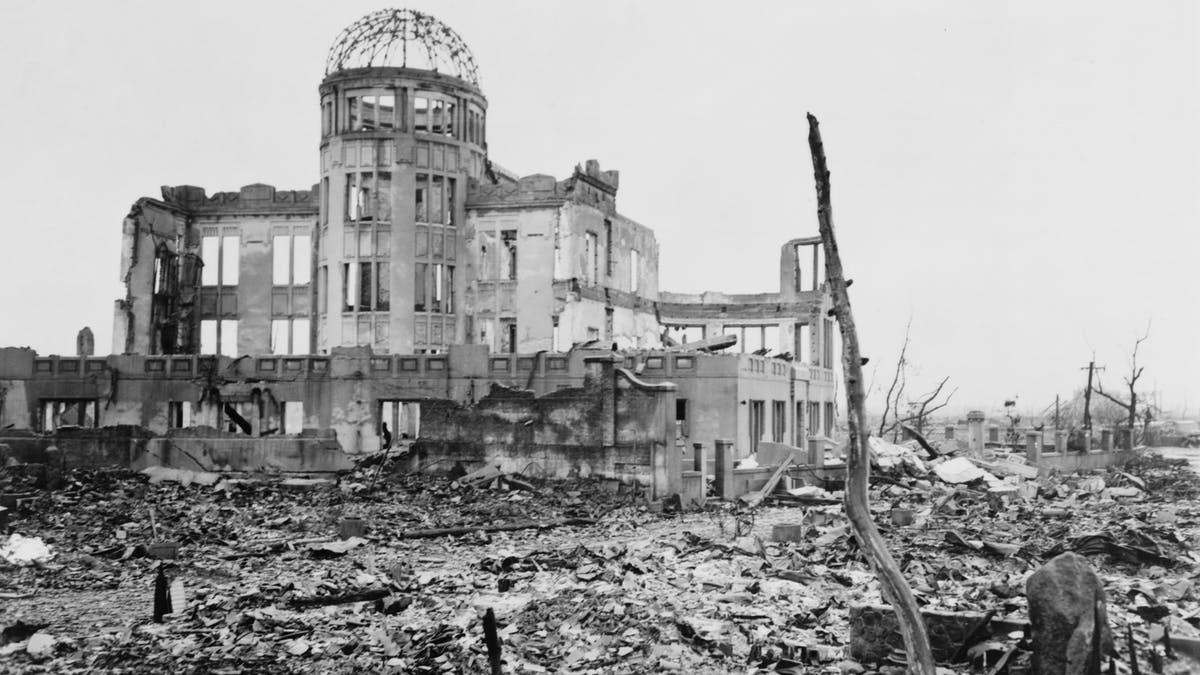
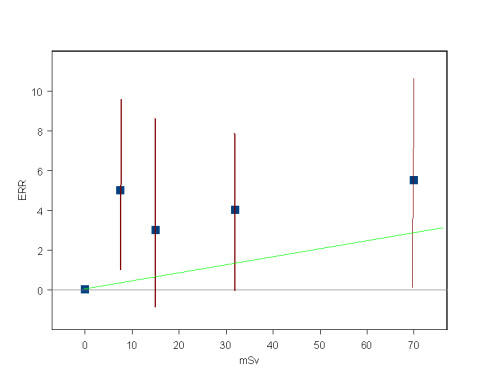

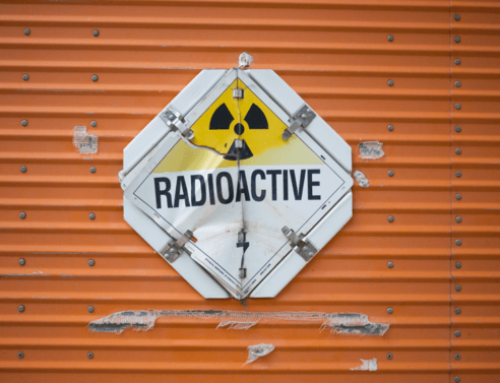
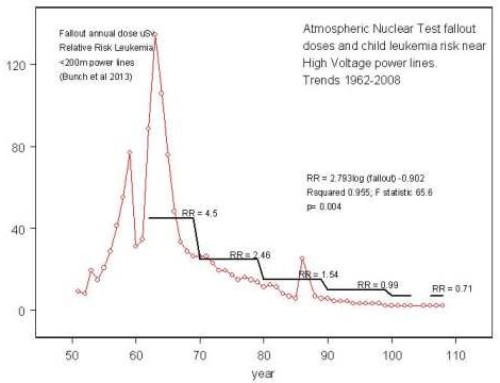
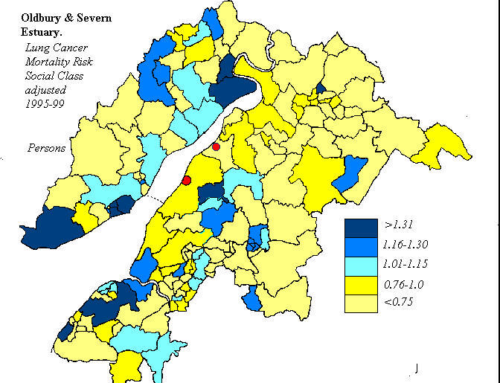
Leave A Comment